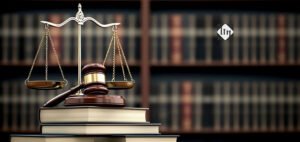“A well-organized system of judicial administration postulates a properly equipped and efficient Bar.” – Law Commission’s XIV Report, 556 (1958)
In the pyramid model of our society, judiciary is at the topmost end of that pyramid of law and justice system. While the common man lies at the bottom of that pyramid.
Thus, it is usually observed that the cord in between the common man and the judiciary is formed by the legal profession, which binds them together in the law. And this legal profession had its own history of evolution.
Ancient Times
It is fascinating to know that in the ancient times almost all of the India lived in the groups of tribes, and communities scattered in micro, tiny, small, and large villages. These group of tribes administered their own law and justice system with the help of tribal heads. And thus, they solved their internal disputes.
When these tribal communities evolved to include kingship, they became kingdoms. And the king and his fiefdom of administrators began doling out justice through King’s court, helped by the king’s councillors. These councillors would also advice the King in various other matters. Chanakya (350-275 BCE) was the most famous of them.
The councillor’s advice would be based on the principles of Dharma (Hindoo) or Dhamma (Buddhist). This way the internal matters of a kingdom were resolved. For the intra-kingdom disputes, a Chakravarthy Samrat’s court would be approached. Many of the times such disputes lead to battles or wars. The most famous of them is The Battle of Ten Kings or Mahabharata (circa 1450 and 1300 BCE).
Medieval Times
Still without any semblance of legal profession, in these periods, as a common rule of legal practice, the litigating parties involved Vakils, appointed by Courts using their power. The Vakils merely acted as agents, paid in percentage-based commissions.
British Era
The first organised legal profession came into existence in the time of British rule in India. The courts derived their power from the East India Company till 1726, post which the power shifted to the British Crown, with the establishments of Mayor’s courts (aka Royal courts) in the British presidency towns of Bombay, Calcutta and Madras. The procedure imitated 1661’s English law. But the courts lacked trained people of proper legal acumen.
In fact, the practitioners in the court were as good as laymen. Neither they had any jurisdiction in criminal matters (which was a sole exclusivity of the Governor), nor they had any expertise. A futile attempt to regulate the legal practices was made in 1753.
In 1773, by the virtue of Regulating Act, Supreme courts were established, and legal profession was organised. The Supreme court framed rule of procedures, for the administration of justice using its power of execution. Though, it only allowed British barristers, attorneys, and advocates (and not native Indians) to practice the law inside the courts.
Then in 1846, came The Legal Practitioners Act. Called as the first charter of the legal profession, it allowed people to act as pleaders, irrespective of their nationality or religion. It also allowed barristers who were enrolled in Her Majesty’s Indian courts and attorneys to practice in Sardar Adalat (of company’s).
Year 1861’s, The Indian High Court Act authorised the establishments of High courts in three presidency towns. Afterwards, civil, and later criminal courts were also organised at different towns, by the Criminal Procedure Code, of 1898.
Then, 1879’s Legal Practitioners Act repealed The Pleaders, Mukhtars and Revenue Agents Act, of 1865. After the founding of High courts, legal practices were divided into six grades, that is, attorneys (solicitors), advocates, vakils of high court, mukhtars, pleaders, and revenue agent. Under the jurisdiction of High court all these professions were brought under one legal system.
Then, to provide a Bar Council for each High court, Indian Bar Councils Act 1926 was enacted. Subsequently, the distinction between Barristers and advocates was removed. Though the mukhtars practicing in Mofussil Courts and pleaders were outside the purview of this Act, it had the powers of approval for the rules made by various Bar Councils. And they were also empowered to reprimand, remove, or suspend any advocate of the High Court from the practice, if found guilty of professional or other misconduct.
The Independent Indian Legal Profession
In 1961, finally, Indian Legal Profession got a unified All-India Bar with its one grade of practitioners only. The Advocate Act,1961, provides for an autonomous bar council in each state and All India Bar Council consisting mainly of the representatives of the state bar councils which enrols the qualified person as advocates and prepares a roll of advocates practicing in the state. While the Bar Council of India prepares a common roll of all the Indian advocates, the Advocates could practice in all courts in India including the Supreme Courts.
The Bar Council of India is entrusted with admission of advocates, their practice, ethics, privileges. It also regulates and disciplines their conduct. It is for the improvement of the profession by itself. Year 2002’s 184th Law Commission Report, and recent 266th Report further regulated the legal professionals.
Modern Futuristic Times
Thus, the legal profession, which was almost stagnant from millennia, and evolved through the colonial India, has further went through a huge transformation since our independence. And today, it has reached the stage where, with more than 1.4 million enrolled advocates nationwide, it is one of the largest in the world.
The efforts of the profession to achieve excellence in all its spheres of practises through stiff competition while dealing with newer technological and other developmental challenges has culminated in the global recognition they earned. And now with online hearings and all, they are completely ready for the future.




